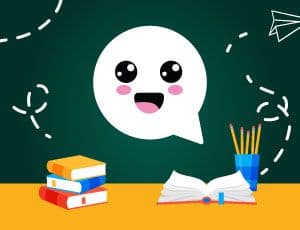Escola Games | Jogos Educativos
https://www.escolagames.com.br
Teacher's support sheet

Word Dictation
Yes, it is possible to learn in a fun way! Find out if you know the words by their sounds. You have to listen, look at the picture on the screen, and type the word using the keyboard. This will train your focus and knowledge on words. Do you accept the challenge?

Teacher's tips
Level of Education: Elementary School
Subject: English
Theme: Language and writing - orthography - literacy
Age: 6 to 9 years old
The word dictation is helpful in the teaching-learning process to evaluate the level of students regarding vocabulary and orthography. This activity is great for the development of many learning aspects. The word dictation develops attention and focus because of the hearing, and stills help to emphasize the orthography. This game brings word dictation through a new perspective, bringing more dynamicity with images and sounds. [FIM-DICA]
Learner outcomes
To develop reading and writing skills;
To acknowledge the differences between the pronunciation and the writing of words;
To understand the word formation process;
To improve their ability to form words;
To link the word to the image;
To develop attention and concentration;
To enhance motor coordination;
To write words orthographically correctly;
To reinforce content discussed during the classes.
Teachers' goals
To develop the writing process and the pronunciation of words;
To enable students to improve their reading and writing skills;
To widen students' vocabulary;
To favor the comprehension of the word formation process;
To help students develop their writing level;
To widen students' knowledge.
Suggestions of approaches for the teacher
(Approach 1) Students can play in pairs to share ideas. They should take turns writing the answer.
Clicking on the caps lock key on the keyboard allows students to use capital letters.
Give them a chart to write all the words of the game, then do a few activities during class.
Suggestions of approaches using the words:
(Approach 2) Read the word and illustrate it.
(Approach 3) Circle the final letter of the word and think about a new word that starts with it.
(Approach 4) Dictate the words to other pairs;
(Approach 5) Elaborate a sentence with each of the words.
(Approach 6) The game can also be homework, and students should register at home.
(Approach 7) Elaborate flashcards. Write the word on one side, and illustrate it on the other. Instead of drawing, you can ask students to find the words' definitions in the dictionary.
(Approach 8) Play hangman.
(Approach 9) Auto-dictation: the students write some words and then check in pairs.
(Approach 10) Play domino with pictures and words.
(Approach 11) Concept dictation: The teacher says a word, and students write the definition. Example: Bat - flying mammal
(Approach 12) Play mimics: The teacher says the characteristics of a word, and the students write the word. Example: an animal with black and white strips - Zebra
(Approach 13) Play word search.
(Approach 14) Pop dictation: Inside balloons, put letters (one letter for each ballon). Ask each student to pop a balloon and say a word that starts with that letter. You can specify the category, such as animals or food.
(Approach 15) Surprise dictation: Put some objects inside a box. Students will get the box, one at a time, and write the objects' names on their notebooks.
(Approach 16) Musical dictation: Play a song. Students listen. Then, stop the music without warning, and students write the last word they heard. You can also hand them a sheet of paper with the song with some blank spaces. Then students write the missing words.
More about the content
The word dictation is common with young learners because it helps their literacy process. There are many ways to do this activity. Some of them are listed above. In this link, you will find some more suggestions.
https://eltlearningjourneys.com/2022/04/28/6-great-ways-to-use-dictation-in-your-english-class/
The word dictation is excellent for students of all levels. It helps improve attention, stimulates concentration, works with orthography, and develops hearing comprehension.
